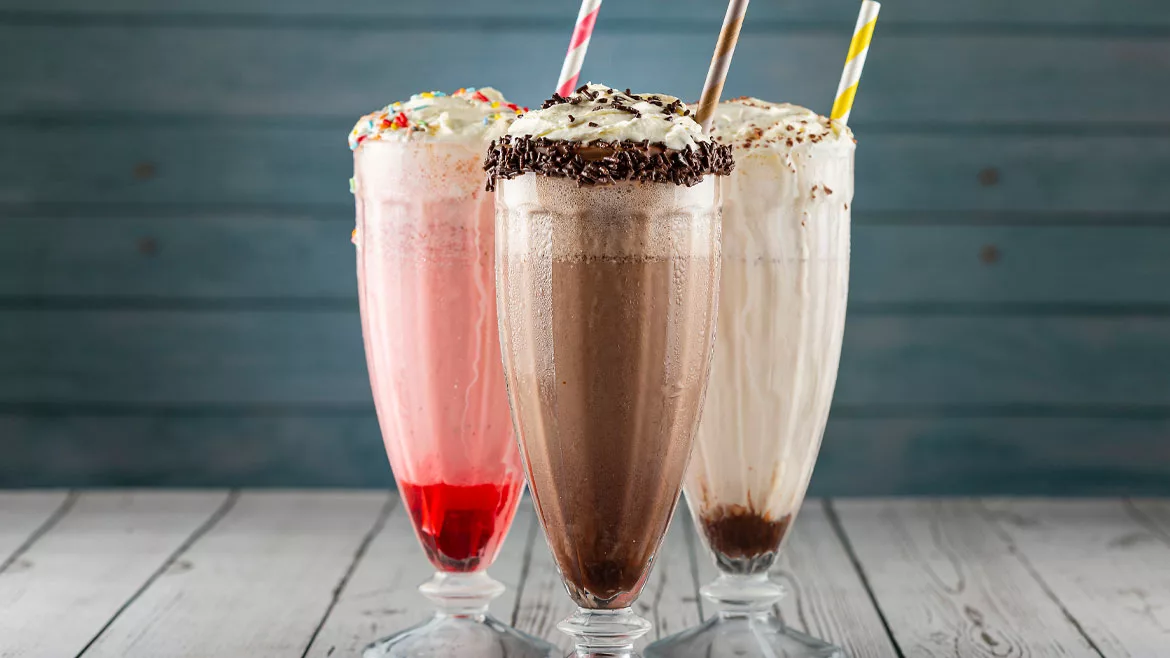Latin Flair in Bebidas for the Masses
Latin Flair in Bebidas for the Masses
By ELIZABETH FUHRMAN
Targeting Hispanic consumers becomes more relevant
as the U.S. population evolves
The number of Hispanics in
the United States is growing three times faster than the population as a
whole, the U.S. Census Bureau reported this summer. Hispanics accounted for
half the U.S. population growth from July 2003 to July 2004 and numbered
41.3 million, almost 14 percent of the population, as of July 1, 2004.
Hispanics now are the leading U.S. minority, outnumbering the African
American population, which was 39 million in July 2004.
In the United States, 38 percent of the Hispanic population is younger than 20 years old, spending an average of
$375 a month, which is 4 percent more than the average for non-Hispanic
teenagers.
With the evolving appearance of the U.S. population
come new expectations from consumers and new dilemmas for marketers
reaching those tastes, cultures and languages that differ from the
traditional masses. Cultural marketing continues to become more relevant as
the U.S. Hispanic population demonstrates more buying power.
Many beverage companies are marketing traditional
Latin products or marketing appropriate products specifically targeted at
the Hispanic population. This month, PepsiCo will launch two of its top
flavor brands in Mexico into heavily Hispanic markets in the United States.
PepsiCo plans to begin selling the apple-flavored soft drink Manzanita Sol
and the orange-flavored Mirinda, which are its No. 2 and No. 3 brands in
Mexico, respectively, behind only Pepsi-Cola in sales. Apple is the
second-largest soft drink category in Mexico, and PepsiCo believes the
demand will carry over for U.S. Latinos.
Additionally, PepsiCo and the America on the Move
Foundation (AOM) have taken measures to address wellness concerns affecting
African Americans and Latinos by joining the National Urban League and the
National Council of La Raza in educating these groups about living a
healthy lifestyle. As the national presenting sponsor of America on the
Move, PepsiCo along with other organizations, will tailor AOM’s
approach to help people initiate and maintain meaningful and measurable
behavior changes and support healthy eating and active living habits.
Also picking up its Latin appeal in the soft drink
category, Coca-Cola Co. launched Coca-Cola with Lime and Diet Coke with
Lime, both examples of a traditional Hispanic flavor growing in popularity.
Coca-Cola’s advertising campaign included billboards, point-of-sale
posters and other printed materials in English and Spanish.
Spanish-language commercials appeared during primetime Spanish-language
programming. According to industry sources, Diet Coke with Lime took 0.7
percent of the U.S. soft drink market in 2004, outselling both Diet Coke
with Lemon and Vanilla Coke.
As far as non-carbonated drinks, Hispanics consume
more fruit juices and drinks than African Americans, reports ACNielsen.
While the lower-sugar content trend hasn’t caught on yet in the
Hispanic market, beverage companies are taking advantage of this sweeter,
fruit-flavored beverage preference. Developed with the Hispanic consumer in
mind, Minute Maid Mifruta flavored fruit drinks are chilled aquas frescas
beverages that are offered in Agua de Jamaica (Hibiscus), Agua de Mango
Naranja (Mango Orange), Agua de Pina (Pineapple), Fresca (Strawberry) and
Horchata flavors in select markets.
Hispanic consumers also have been a factor in the
growth of the sports and energy drink category. A study on new age
beverages published by Business Trend Analysts Inc., Commack, N.Y.,
demonstrated that lime was the No. 3 ingredient used in sports drinks,
behind strawberry and orange. This research also revealed that Hispanics
are more likely than any other ethnic group to purchase an energy or sports
beverage. In turn, Gatorade’s Xtremo, which has 1.9 percent of the
market share according to Chicago-based Information Resources Inc., was
developed with flavors popular in Latin America such as citrus and mango.
Xtremo, which is marketed in heavily Hispanic markets, fits into the more
than two decades of Spanish-language advertising Gatorade has used in
marketing to the Spanish population. Coca-Cola’s Powerade, on the
other hand, will launch its first advertising campaign targeted to
Hispanics this year.
World of deportes
In the energy drink arena, Hat Trick Beverage Inc.,
Encinitas, Calif., signed an exclusive distribution agreement with Shonar
Distribution, a beverage distributor in Rancho Cucamonga, Calif., to
distribute Club America Energy Drink. Club America, owned by Hispanic
broadcaster Univision Communications Inc., is the largest of all of
Mexico’s professional soccer teams. Under terms of the agreement, Hat
Trick, through its Blue Line subsidiary, will have exclusive distribution
rights of the berry-flavored energy drink throughout San Diego County,
which has a Hispanic population that now stands at more than 1.2 million.
The company expects sales of more than $500,000 in the first year.
Miller Brewing Co. also sealed its largest deal ever
to target the Hispanic market with Univision. The brewer entered into a
three-year, $100-million deal with Univision covering advertising,
marketing, sponsorship and brand integration. The deal covers sports,
entertainment, music and public service announcements on broadcast networks
Univision and TeleFutura, cable network Galavision, radio networks and
stations, and the Univision.com Web site. The agreement includes exclusive
Miller placement in World Cup coverage and the sponsorship of more than 200
Mexican soccer league games each year, including exposure on the game clock
throughout each game. For boxing, Miller will get exclusive sponsorship and
onsite signage. In January, the Friday night boxing show program also was
renamed Sólo Boxeo de Miller to reflect Miller’s program entitlement. On the
entertainment side, Miller will be the exclusive beer sponsor of prime time
soap operas and sitcoms.
In September, Miller Lite and Miller Genuine Draft
will kick off Fiestas Patrias (celebration of independence) for Mexico and seven other Latin
American countries. Point-of-sale displays feature a three-part poster
series highlighting the three top regions of Mexico (Mexico City, Michoacan
and Monterrey) that demonstrate both iconic local imagery and models who
represent the characteristics of that region. In November, Miller then will
kick off the holiday season with Miller Te
Acera a los Tuyos, (Miller brings you closer to
your loved ones). Miller’s Hispanic Holiday 2005 promotion hopes to
build long-term adoption of the Miller trademark brands among Hispanic
consumers during a key beer-selling holiday season. Consumers can also
participate in a national sweepstakes by calling a toll-free number or by
registering online. Prizes include a cruise for eight to the Bahamas, a
2006 Ford F-150 Supercrew XLT, Canon digital cameras and camcorders and $50
Sprint Prepaid PhoneCards.
Modelo Especial Beer also added a new larger-than-life
presence at retail this summer with a new stand-up display featuring
well-known model Claudia Moreno. Moreno, a popular actress and first
runner-up in the 2000 Miss Universe Pageant, appeared in a variety of ads
for Modelo Especial and a boxing themed poster and several television spots
for Corona and Modelo Especial. Moreno visited select markets this summer
to sign posters and promote the brand at baseball and soccer games and
concerts.
Almost all of Chicago-based Barton Beers’
marketing and point-of-sale efforts for Modelo Especial Beer is targeted
toward the Hispanic market and appear in Spanish language because of the
beer’s strong Latin roots, although its crossover sales continue to
rise. Pacifico, a smooth lager, and Negra Modelo, a dark beer, have seen
similar popularity as traditional Mexican beers that have grown into
popular U.S. consumer brands.
Barton Beers also will conduct a Fietas Patrias promotion this
September for Corona Extra, Corona Light and Modelo Especial Beers. Corona
Extra/Corona Light’s theme Nuestro
Orgulla, Nuestra Cerveza (Our Pride, Our Beer)
includes inflatable sombreros, blinky buttons and banners, and Modelo
Especial’s Viva la Independencia (Live Independence) theme includes similar
merchandising. By devoting priority display space and merchandising, the
new promotion materials aim to build on- and off-premise sales of Corona
Extra, Corona Light and Modelo Especial during the Hispanic
community’s largest holiday, says Guillermo Gutierrez, marketing
manager, Latino market for Barton Beers.
Corona, whose appeal goes much wider than just a
traditional Mexican beer, also has Spanish-language ads on television and
radio. Corona Extra and Corona Light, as the No. 1 and No. 3 imported beer
brands, respectively, according to IRI, sponsor many soccer teams and
conduct many sports sponsorships.
More than Latin appeal
But marketing traditional Hispanic products to the
masses isn’t as incredibly easy as Corona has made it look. No
beverage company really wants to market only to a small demographic in the
U.S. market, but reaching the masses requires much time and energy, says
Jorge Goldsmit Gerson, president of Eat Inc., Chapel Hill, N.C., and maker
of Cañita Aguas Frescas.
“It’s really hard to lump Hispanics into
one category,” he explains. “You have Hispanics who were born
here; you have Hispanics whose grandparents were born here; and Hispanics
who were born abroad. They don’t necessarily like the same things for
the same reasons. And then there are Hispanics from Mexico, the Caribbean
and South America. It’s not as completely complicated as it seems,
because they all speak Spanish and they share similar values. But there are
some products that don’t mean much to all the groups.”
For example, Hibiscus, which is one of the flavors of
Cañita, is a very popular flavor in Mexico. But the Tamarind flavor
of Cañita appeals to everyone from Latin America, with the exception of maybe Argentina and Chile because
they have a colder climate, Goldsmit Gerson says.
And even though Cañita Aguas Frescas are
traditional Mexican drinks, this Hispanic marketed product is attracting
attention from the health food segment because they are all natural. In
fact, Cañita sells in Whole Foods Markets in North Carolina, which
is not a Hispanic-targeted chain of supermarkets.
“Even though the health market is much smaller
than the Hispanic market, as far as the appeal for the product, I think
it’s got potential,” Goldsmit Gerson says. “In the long
run, Hispanics are going to adopt some of the values and preferences of the
mainstream market and they are also going to demand natural brands.” BI
Looking for a reprint of this article?
From high-res PDFs to custom plaques, order your copy today!





